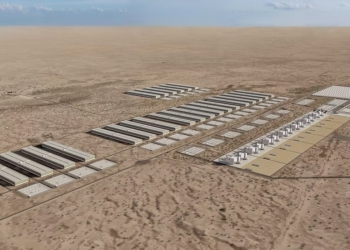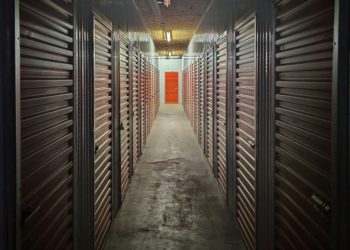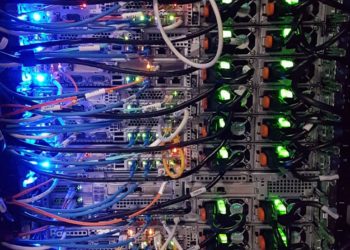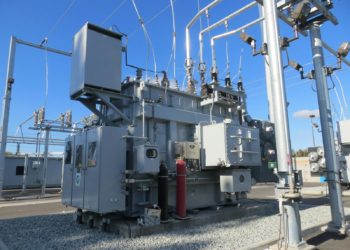By EcoBusinessNews
Credit: Ashley Cooper
The United States stands at a critical crossroads in its quest to dominate the global artificial intelligence (AI) race. The Trump administration’s aggressive rollback of renewable energy initiatives is sending shockwaves through the data center industry, threatening to derail the nation’s AI ambitions and choke the explosive growth of the tech sector. As AI’s insatiable hunger for power collides with a policy shift favoring fossil fuels, experts warn of looming energy shortages, skyrocketing costs, and a dangerous reliance on dirtier energy sources that could undermine both economic and environmental goals.
A Perfect Storm: AI’s Power Hunger Meets Policy Roadblocks
Data centers, the backbone of AI innovation, are projected to consume a staggering 83.7 gigawatts of energy by 2030, equivalent to powering an entirely new state the size of Texas, according to the Center for Strategic and International Studies. This unprecedented demand is driven by the computational intensity of training and running AI models, which require vast amounts of electricity to operate at scale. Renewable energy—wind, solar, and hydroelectric—has emerged as the fastest, most cost-effective way to meet this demand, offering tech giants like Amazon, Google, and Microsoft a path to sustainable growth while keeping costs in check.
However, the Trump administration’s policies are throwing a wrench into these plans. Since taking office, the administration has suspended clean energy projects on federal lands, halted federal loans for renewable energy development, and canceled marquee projects like Equinor’s $5 billion Empire Wind site. These moves have sparked alarm across the tech industry, which relies on renewables to power its sprawling data center networks.
“The Trump administration’s hostility toward renewable energy is a direct threat to the data center industry’s ability to keep up with AI’s explosive growth,” said Simon Ninan, senior vice-president at Hitachi Vantara, a leading provider of data center infrastructure. “Without access to clean, affordable energy, the U.S. risks ceding its leadership in AI to countries like China, which is aggressively modernizing its grid and prioritizing efficient power distribution.”
The High Stakes of the AI Race
The global race for AI supremacy is not just a matter of technological bragging rights—it’s a geopolitical and economic battle with profound implications. The Trump administration has framed AI as a national security priority, warning that falling behind China could have dire consequences for the U.S. economy and global influence. Yet, its push to prioritize fossil fuels over renewables is creating a paradox: the very policies meant to secure America’s AI dominance could hobble the infrastructure needed to sustain it.
Renewable energy is not only cleaner but also faster to deploy and cheaper to maintain than fossil fuel alternatives. Building new gas power plants, for instance, is a slow and costly process, with lead times for large-scale gas turbines stretching to 2029, according to suppliers like Siemens and GE Vernova. In contrast, wind and solar projects can be brought online in a fraction of the time, providing a critical lifeline for data centers racing to meet surging demand.
“Renewables are the only viable way to flood the grid with the massive amounts of electricity needed to power AI,” said Rich Powell, chief executive of the Clean Energy Buyers Association. “If we can’t scale up clean energy, we’ll be stuck relying on expensive, high-emission sources, which will drive up costs and jeopardize our climate goals.”
A Regional Rebellion: States Fight Back
The crackdown on renewables has sparked fierce resistance from Democratic-led states, particularly in the Northeast, where wind energy is seen as a cornerstone of future energy plans. A coalition of 17 state attorneys-general filed a lawsuit on May 5, 2025, to block the administration’s efforts to stifle wind energy development. These states argue that the federal government’s actions threaten their ability to meet growing electricity demands and achieve ambitious climate targets.
In Texas, the nation’s third-largest data center market, local policies are adding fuel to the fire. Lawmakers are debating bills that would impose stricter regulations on solar and wind projects, potentially choking off the state’s ability to attract new data center investments. “Texas has a golden opportunity to become a global hub for data centers,” said Doug Lewin, president of Stoic Energy. “But these anti-renewable policies could kill that potential before it even takes off.”
The Cost of Going Dirty
For tech giants, the shift away from renewables poses both economic and reputational risks. Companies like Amazon, the world’s largest corporate buyer of renewable energy, have made carbon-free energy a cornerstone of their operations. “Renewables are often cheaper because there’s no fuel to buy,” said Kevin Miller, vice-president of Global Data Centers at Amazon Web Services. “Our past agreements with renewable energy providers were no-brainers—they saved us money while helping us meet our sustainability goals.”
Without access to renewables, data center operators may be forced to turn to dirtier, more expensive energy sources like coal or natural gas. This shift could drive up operational costs, erode profit margins, and undermine corporate commitments to net-zero emissions. Smaller operators, lacking the lobbying power of tech titans, are particularly vulnerable. “Small and medium-sized players are in a holding pattern, waiting to see if the administration loosens restrictions,” Ninan said. “In the meantime, they’re likely to absorb higher costs or resort to dirtier energy, which is a lose-lose.”
The Nuclear Mirage
Some industry players are pinning their hopes on nuclear small modular reactors (SMRs) as a potential solution. However, experts caution that SMRs are years away from widespread deployment, with many projects still in the experimental phase. “Nuclear could play a role in the future, but it’s not a near-term fix,” said Nick Hertlein, managing director at Stonepeak, an infrastructure investment firm. “Right now, renewables are the only scalable, cost-effective option we have.”
A Call to Action
The data center industry’s plight is a wake-up call for policymakers, businesses, and citizens alike. The U.S. cannot afford to let short-sighted policies derail its AI ambitions or jeopardize its climate commitments. By prioritizing renewable energy, the nation can unlock the full potential of its tech sector, create millions of jobs, and lead the world toward a cleaner, more prosperous future.
Share this story to raise awareness about the critical link between renewable energy, AI, and economic growth. Together, we can demand policies that power progress without sacrificing our planet.
Additional reporting by EcoBusinessNews contributors.
The U.S. is racing to lead the global AI revolution, but the Trump administration’s attack on renewable energy is threatening to derail it. Data centers, the backbone of AI, are set to demand 83.7 gigawatts by 2030—equivalent to powering Texas. Renewables like wind and solar are the fastest, cheapest way to meet this need, yet policies halting clean energy projects and favoring fossil fuels are creating energy shortages and driving up costs. 😱
Tech giants like @Amazon and @Microsoft warn that without renewables, AI growth could stall, pushing operators toward dirtier, pricier energy. This risks not only U.S. leadership in AI but also our climate goals. States are fighting back—17 Democratic attorneys-general are suing to protect wind energy—but the clock is ticking. ⏰
💡 Why it matters: Renewable energy is critical to powering AI sustainably and keeping the U.S. competitive. Share this post to spark action for clean energy policies that fuel innovation without harming our planet! 🌱
👉 Read more at EcoBusinessNews.com (link in comments).
#AI #RenewableEnergy #DataCenters #Sustainability #ClimateAction
@FinancialTimes @CSIS @CleanEnergyBuyers @AmazonWebServices



















